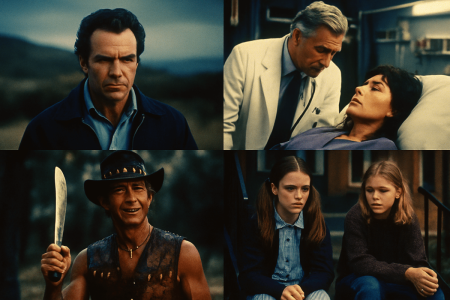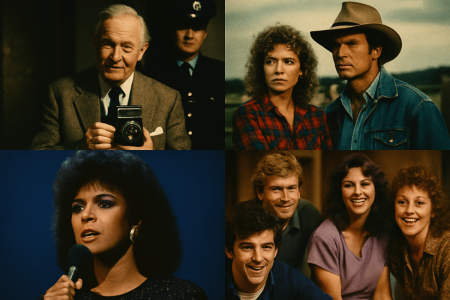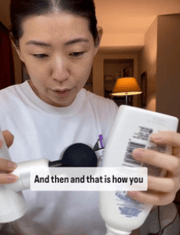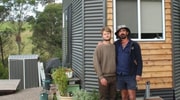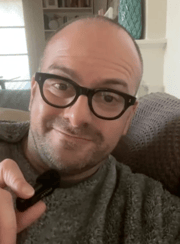TV Time Machine: The Aussie Shows That Shaped a Generation
- Replies 0
Australian TV started as an experiment in black-and-white with the 1956 Melbourne Olympics, when Bruce Gyngell famously opened the first broadcast saying, “Good evening and welcome to television.”.
From that point on, families gathered around the box, and TV became part of our everyday lives. As many of us recall, it wasn’t The Jetsons that felt like home – it was local Aussie productions like Skippy the Bush Kangaroo, Mr Squiggle, Homicide, and later Neighbours and Hey Hey It’s Saturday. These shows weren’t just entertainment; they reflected our towns and values.
In fact, researchers note that shows like Round the Twist, Skippy, and Mr Squiggle “offered something the Jetsons or the Flintstones could not” – a distinct local flavour that resonated across generations.
As we flip through these nostalgic memories, we celebrate the homegrown personalities and programs that truly became part of Australia’s cultural DNA.
Pioneering Aussie TV (1950s–60s)
In 1956, television burst onto the scene just in time for the first Melbourne Olympics. Within a month, channels were broadcasting test patterns and Olympic events, and soon local studios were rolling tape. Variety and talk shows dominated the early years. In Melbourne Tonight (1957–1970), hosted by Graham Kennedy, was appointment viewing for city audiences. Graham Kennedy became known as “the King of Television”, a cheeky but lovable host who, as one observer put it, “was television for many Australians”.His warm style (and that famously cynical laugh) meant that by the time he retired in the 1990s he had picked up “five Gold Logies” and a place in history as one of our most celebrated TV personalities. Kennedy, along with contemporaries like Don Lane, Bert Newton, and Hazel Phillips, set the tone for Australian TV’s irreverent wit and laid the groundwork for all who followed.
At the same time, Australia’s first made-for-TV dramas were emerging. In October 1964 the crime series Homicide premiered on Melbourne’s HSV7 – literally our first home-grown police show. Homicide was a landmark; it was “Australia’s first police drama series”, and it resonated so strongly that it became a training ground for Australian actors (and was even sold abroad).
The NFSA notes that Homicide “set a precedent for Australian police dramas” – and that none since have matched its “enduring appeal” or cultural impact. Its realistic style and storylines gave viewers a glimpse of Australian life and struggles, and paved the way for later shows like Division 4, Matlock Police, and eventually Blue Heelers.
Meanwhile, Skippy the Bush Kangaroo was hopping onto screens (1966–1969) and into our hearts. Set in Waratah National Park, Skippy followed young Sonny Hammond and his intelligent kangaroo companion. The NFSA points out that Skippy was “one of Australia’s greatest cultural exports”, broadcast in 128 countries to over 300 million viewers. (Just hearing the first few notes of its theme makes most Aussies hum along!) An enduring image for many of us is Sonny gently feeding the kangaroo – a wholesome picture of adventure and friendship.
Young Sonny feeding Skippy the kangaroo – one of Australia’s favourite TV friends.
Australian soaps also took root. In 1967 the soap opera Bellbird debuted as ABC’s first ongoing drama, chronicling life in a small country town. On commercial channels, Take That (1957–59) and Autumn Affair (1958) were early attempts, but it was Number 96 in 1972 that really pushed boundaries. Number 96, set in a Sydney apartment block, scandalised audiences with nudity, sex, and social issues that had never been on free-to-air before. As one TV historian noted, “Tonight, Australian television loses its virginity.” – the provocative tagline used to promote the show. Number 96 became legendary for tackling taboo topics (gay relationships, drug use, even sexual assault) with a frankness that was unheard of.
As a fan and author of a book on the series explains, viewers tuned in for the shock and stayed for the memorable, diverse characters and fast-paced storytelling. In its heyday Number 96 was “a ratings sensation” that broke many taboos and even helped save its network from collapse. To this day people remember it as “legendary” in Aussie TV lore (though sadly many early episodes are lost).
This era also gave us weekly variety programs that drew families together. Shows like Bandstand (1958–73), hosted by Brian Henderson, introduced us to stars like Johnny Young and Col Joye. Benny Hill and Lassie were hits, but the distinctly Australian flavour came with local hosts and comic sketches.
If you grew up in the 1960s, you remember tuning in to see gifted musicians and jugglers and silly antics each Saturday night. It was television that felt “kind to everyone”, as Michael Caton’s character Frank Gilroy on A Country Practice once said of small-town life – and it reflected our own neighbours’ faces and lives.
Suburban Dramas and Soaps (1970s–80s)
By the 1970s and 80s, Australian TV had found its voice. Local stories filled prime-time slots, and everyday life – complete with Aussie accents and accents – was on display. The beloved The Sullivans (1976–83), a family saga set during WWII, became a national institution. The Starts At 60 nostalgia site calls it “a true Aussie TV classic” – at its peak it was one of the most popular series of the late 1970s, earning critical acclaim and even launching big careers. When the family’s daughter Toby married, it was as eagerly watched as any event on screen.Similarly, The Restless Years (1977–81) and The Young Doctors (1976–83) tackled issues like youth culture, war, and family strife. In living rooms across Australia, these dramas became talking points. (Ask someone over 60 and they’ll swear by Grace and Dave Sullivan’s loving quarrels or have a soft spot for Dad Tom Sullivan’s gentle smile.)
Toward the late 1970s, gritty police and courtroom dramas also had their moment. After Homicide and Division 4, shows like Chopper Squad, Cop Shop, and Punishment (later retitled Prisoner: Cell Block H) held viewers’ interest. In fact, Prisoner (1979–86) featuring women in a Victorian women’s prison, built a cult following at home and overseas (it was retitled Cell Block H in the UK). It’s worth noting that Prisoner had 692 episodes – nearly as many as Neighbours!
On the comedy side, the 1970s also gave us situations that still make us laugh (or cringe) today. Kingswood Country (1980–84) lampooned the suburban Australian dad (“Don’t f–k with the Falcon!”) while Mother and Son (1984–94) gave a bittersweet look at caring for an elderly, dotty mother.
These were shows where Australian sensibilities – the dry humour, the banter between mates – came through loud and clear. Even mundane rituals (visiting the pub, knocking on neighbors’ doors, or hearing Bert Newton’s “Hey hey, kids!”) were somehow special when beamed through our screens.
Meanwhile, educational and children’s programs thrived. Mr. Squiggle (1959–99) with its pencil-nose alien, and Adventure Island (1967–72) with its puppet friends, taught endless generations of kids to dream. In the 1980s and 90s a new wave arrived – think The Bush Gang, Home, and Bananas in Pyjamas – but the nostalgic glow is strongest for those first local series.
As a radio program on ABC put it, “When thinking about the shows that had an impact on us as children, it’s often the Australian television we remember most”.
Australia’s Music and Sports Shows
The 1980s also saw Aussie TV charting the times musically. On the ABC, Countdown (1974–87) became a Sunday-night ritual. Its host Ian “Molly” Meldrum, in sequins and a Stetson hat, literally made stars. NFSA recalls that Countdown “quickly became a Sunday night ritual” in pop culture. Long before MTV, Countdown introduced us to world music videos and live (or lip-synced) performances.An episode featured everything from AC/DC’s rock riffs to quirky Australian bands – and helped teen fans fall in love with homegrown talent. In fact, Molly’s catchphrase, “Do yourself a favour…” as he recommended a song, was legendary: he once said he could make a record a hit “with just one mention.”.
To this day, many Aussies trace their musical tastes back to Saturday nights sitting cross-legged in front of the TV.
Sport and variety were inseparable with TV too. Everyone knows Rage (midnight music video host X in black leather) or Wheel of Fortune featuring crossword puzzles, but local stars turned up everywhere. Even sports programs held their own entertainment value: The Don Lane Show (9/70-8/75) melded US-style comedy with Aussie guests, and Seaside Hotel (60s kids’ show) had families swapping recipes and songs.
Australian rules football, rugby league and cricket matches brought neighborhoods together on weekends, but even sports commentary (Brian Johnston’s nasal drawl on ABC radio turned visual on delay) became part of the national chat. Clips of big wins or funny on-field moments often resurfaced at office water coolers the next day – just as the Number 96 cliffhangers had.
Evening Soaps and Global Fame (1980s–2000s)
No nostalgic tour of Aussie TV is complete without Neighbours and Home and Away. Neighbours (1985–) opened on Melbourne’s Channel 7 but nearly got cancelled before Ten picked it up. It ended up a cultural phenomenon, especially abroad. NFSA notes that Neighbours “won die-hard fans in Australia and a huge following in the UK” and is now “the longest-running Australian drama series in history”.Iconic moments – like Scott and Charlene’s wedding in 1987 – drew “millions of viewers world-wide”. (Who can forget that joyful kiss on Ramsay Street after learning Charlene was pregnant? For many Aussies, that was TV history.) Over time Neighbours became a launchpad for stars: Kylie Minogue, Jason Donovan, Russell Crowe, and countless others all started as Ramsay Street residents.
Ramsay Street’s tidy suburban homes in Neighbours – the idyllic backdrop of many an Aussie soap opera.
Home and Away (1988–) did similar things with its fictional Summer Bay. Abroad it became big news every time Alf Stewart had a breakdown or Sally’s dog fell off a cliff (well, almost!). Back home, it offered escapism: sun, surf, and melodrama.
By the late 90s both Neighbours and Home and Away had featured hundreds of episodes and daily storylines – so much so that reruns and archives became treasure troves. Networks even rebooted old episodes on streaming so younger fans could see Kylie’s first waltz or Scott’s Beatles drum kit.
At home in prime time, series like A Country Practice (1981–93) hooked families each week. Set in the fictional Wandin Valley, it mixed medical stories with community life. The Guardian later noted that ACP ran 1,088 episodes and “sucked you into learning about all sorts of health and social problems in our society” through beloved characters.
Nine million Australians tuned in weekly to Wandin’s dramas, romances, and bushland scenery. Teachers and parents now say they learned about AIDS, recycling, and First Nations issues from A Country Practice. That’s how deeply these shows became woven into our fabric.
Variety and the “Today Is Tomorrow” Era
If family dramas were the heart of Aussie TV, variety shows were its soul. In the 70s and 80s, Hey Hey It’s Saturday (Nine, 1971–99) was legendary. Daryl Somers and sidekick Ossie Ostrich made Saturday nights feel unpredictable and fun – anything could happen. We still laugh at ossies and mockumentaries of “Dickie Knee”.When radio legend John Blackman passed away in 2024, ABC remembered that his voice (as Hey Hey’s announcer and Mr. Dickie Knee) was “iconic and part of the tapestry of Australian culture throughout the 80s and 90s.” Comedian Mark Humphries said, “His voice was the soundtrack to that show. It’s hard to think of many other Australian performers whose speaking voice lives in our collective memory the way that John Blackman’s does.”. The entire Hey Hey cast became celebrities; the segment “Red Faces” was a national tradition.
By contrast, ABC’s Play School (1966–) quietly entertained and educated, singing “there’s a bear in there” each morning. For kids, Mr. Squiggle’s nose sketches and Justine Clarke’s radiance filled the weekday schedule. For adults, The Don Lane Show and Tonight Live (with Steve Vizard) mixed music, sketches and interviews. And don’t forget quiz shows like Sale of the Century and Wheel of Fortune, where ordinary people could win cash from their lounge.
All of these built shared memories: the jingles, the catchphrases (“Come on down!”), the corny prizes, the half-yawns after late night sketches. In hindsight, many commentators say we probably won’t see TV like that again. As ABC noted of Hey Hey: “Running two hours every Saturday night… we probably won’t see a variety show like Hey Hey It’s Saturday on the air again – it is a type of TV that belongs in the past.”
Indeed, the communal, appointment-viewing feel of that era (three channels, families around one antenna) is now a precious relic.
Rediscovering Old Favourites
What happens to all those shows now? Like classic movies, many Aussie TV classics have been gradually unearthed for streaming. The National Seniors article “Blasts from television’s past” notes that Number 96, after 50 years, is being released on the ad‑supported streaming site Brollie (with TV historian Andrew Mercado providing a bridge to the old episodes).Even kids’ favorite Round the Twist has returned on Brollie. The free catch-up services of the networks are dipping into archives: 7Plus offers A Country Practice, Packed to the Rafters and Always Greener, 9Now has McLeod’s Daughters and Underbelly, and 10Play carries Prisoner and Water Rats (and apparently thousands of old Neighbours episodes).
The ABC’s iview has put up Countdown, Frontline, and even Mother and Son. Even SBS On Demand streams classic Aussie films like Puberty Blues and Priscilla. Each of these brings bygone TV back into our living rooms (through laptops now, but still with big memories attached).
It’s bittersweet: some beloved programs are easy to find, but others are lost to time. Rights issues (like unlicensed music) or missing tapes mean shows like Skippy or early A Country Practice episodes remain unavailable. National Seniors laments that even only 18 of the original Number 96 black‑and‑white episodes still exist.
Nonetheless, whenever the theme song of an old show plays, or the first scene of a familiar episode appears, viewers immediately slip back into that era – reminding us how intimately TV was woven into our daily routines.
The Lasting Legacy
For Australians now in their 60s and beyond, these TV memories are stronger than any childhood photo album. They shaped how we saw the world: our first lessons about family, community, humour and even politics came from the screen.We cheered with The Sullivans as mum Grace turned nursing recruits into war heroes; we cringed during Mother Archer’s gaffes on Kingswood Country; we grinned at Noelene’s bakery on Home and Away; and we hummed Skippy’s theme as Sonny played. These were the shows broadcast live or taped on expensive film and videotape, when TV executives thought “Who cares about reuse?” – only later discovering they had created priceless history.
Media historians now point out something important: shows like A Country Practice unintentionally chronicled the 1980s in Australia, tackling issues from HIV/AIDS to indigenous land rights on free-to-air.
The NFSA archives preserve entire runs of Homicide and Skippy so future generations can study how we lived. And for us, watching an old episode is a time capsule – we remember exactly where we were: “in the caravan by the Murray River,” or “at grandma’s house eating meat pies,” or “chasing my hat when the fan blew it,” all while the credits rolled.
TV also brought Australians together across vast distances. Before Netflix and YouTube, there was Matlock Police on a Friday night, then Neighbours on a Monday – and everyone had something to talk about at work on Tuesday. A striking example: Neighbours’ Scott and Charlene wedding episode in 1987 not only riveted local audiences, it was watched by “millions worldwide”. That shared experience gave many Australians of that generation a sense of pride – our stories could travel.
Today, as new content floods screens, these old shows remind us where we came from. The hall-of-fame personalities (Kennedy, Somers, Meldrum, Henderson) are often gone, but their work endures. Even kids now might scroll through YouTube clips of Countdown (“Do yourself a favour…”) or Hey Hey. And whenever we find ourselves humming an old TV theme (from Skippy, Round the Twist, or Mother and Son), it’s clear these programs live on in us.
TV nostalgia also sparks conversations between generations. Grandkids now asking “What was TV like when you were young?” get tales of giant antennas and live gaffes and coaxial cables. Perhaps they’ll wonder: could today’s shows ever become as iconic as the ones that shaped Mum and Dad’s lives? As Australia’s cultural memory, these programs were more than just flickering images – they were our neighbours, doctors, cops, and even kangaroos.
Which of these Aussie TV time machines lives in your memory the most? How did these shows shape your view of Australia? What stories or characters from today do you think people will be reminiscing about 30 or 40 years from now?

